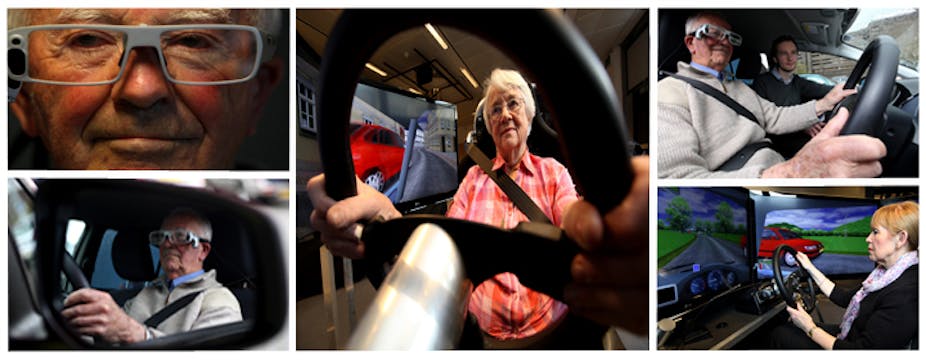As we get older, our experience of driving changes, bringing new anxieties and hurdles. But when older people stop driving, their ability to get around decreases significantly. This can have a knock-on effect for their general well-being.
The number of older drivers is predicted to double by 2030 so new technologies will be needed to help them tackle the problems they face when wanting to stay on the road for longer. Our research into helping older drivers has thrown up a range of problems. For example, these drivers are particularly anxious about turning right and will travel miles out of their way to avoid doing so.
Using a driving simulator, eye-tracking goggles and biometric technology that monitors heart rates and cardiovascular health, we investigated stress triggers for drivers as well as how well their concentration levels changed on the road.
As drivers get older, their confidence in their ability behind the wheel fades and many give up their cars before they need to. For those that continue, we have found that avoiding challenging situations like the right turn into oncoming traffic or finding a route they are comfortable with becomes more important than getting to the intended destination within a certain time. We might not be able to help them conquer this fear but we can help them work around it.
We are working on a bespoke SatNav that is designed to respond to the unique needs of older road users. Instead of indicating the fastest route for a journey, the device selects the safest, least stressful option, such as by mapping out a route with the least number of right turns. The SatNav could also display images of landmarks that appear along the route to reassure drivers that they are where they are supposed to be.
The older drivers we worked with at our DriveLAB using a driving simulator told us that they were keen to try new technologies but felt that devices were often designed with younger users in mind, so that too has become an important part of our work. Easy to use technologies such as “forward-facing radars” that warn drivers how close they are to other vehicles could also help with some of the problems we identified, such as parking blindspots. “Heads up” dashboard displays projected on to the windscreen are an option too.
Perhaps surprisingly, driving above the speed limit, particularly on roads with low limits was a common problem among our older drivers, so helping them stay aware of how fast they are travelling is also important.
Many people see old age as a time to stop driving but that could cause more problems than it solves as the proportion of the population over a 65 increases. With the help of technologies like these, we can make it easier for people to stay independent and mobile for longer.

